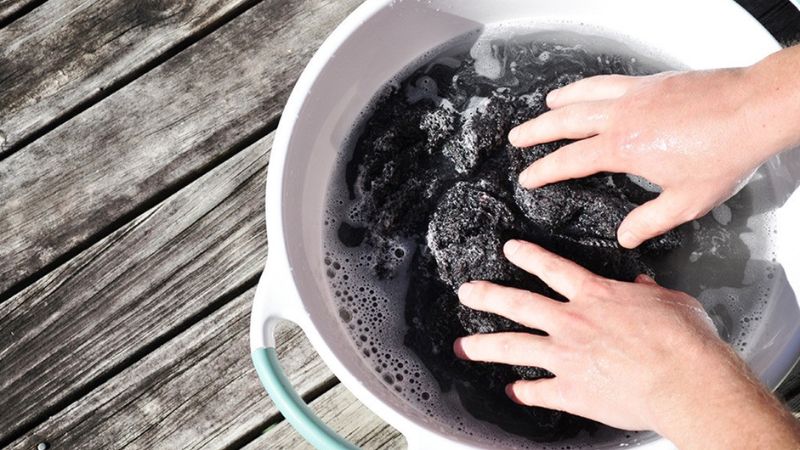Blog
How Do You Wash Wool? A Guide to Caring for Wool Fabrics
Wool is a beloved fabric known for its warmth, durability, and luxurious feel, making it a staple in wardrobes, blankets, and even home décor. But unlike other fabrics, wool requires special care to maintain its quality. Washing wool improperly can lead to shrinkage, damage, and even the dreaded “wool felting”. Wondering how do you wash wool safely? In this comprehensive guide, chatali.xyz will walk you through the best practices for washing, drying, and caring for wool so that it stays beautiful and comfortable for years.
Why Wool Requires Special Care
Wool fibers are natural, delicate, and prone to felting—a process that occurs when the fibers become tangled, causing shrinkage and a rough texture. Wool also has a natural protective layer, which repels water to some extent but can be damaged by excessive heat, agitation, or harsh detergents. Learning the right way to wash wool prevents these problems and preserves the natural oils and texture that make wool so appealing.
How to Check if Wool Is Machine Washable
Before you start washing, check the care label on your woolen item. Many wool garments are labeled “dry clean only”, but others may be safe for gentle machine or hand washing. Here’s a quick guide:
- Machine Washable Wool: If the label says “machine washable”, it usually indicates the wool has been treated for washing. These items can often be washed on a gentle or wool cycle in your machine.
- Dry Clean Only: If your wool is marked “dry clean only”, it’s best to follow the label to avoid damaging the fabric.
- Hand Wash Only: For wool items without specific care instructions, hand washing is generally a safe choice.
How to Hand Wash Wool: Step-by-Step Guide
Hand washing is often the gentlest and safest way to clean wool items. Here’s how to do it:
Gather Your Supplies
- Mild wool detergent (or baby shampoo as an alternative)
- Basin or clean sink
- Towels for drying
Fill the Basin
Fill a basin with lukewarm water. Avoid hot water, as it can cause the wool to shrink or felt.
Add Detergent
Add a small amount of mild wool detergent, following the instructions on the bottle. Avoid using regular laundry detergent, as it can be too harsh for wool fibers.
Submerge and Soak
Place the wool garment in the basin and gently press it down to ensure it’s fully submerged. Let it soak for about 10-15 minutes. Avoid scrubbing or wringing the fabric, as this can cause damage.
Rinse Gently
Drain the soapy water and refill the basin with clean, cool water. Gently swish the garment to rinse out any remaining detergent. Repeat this step if necessary until all soap is removed.
Press Out Excess Water
Gently press the water out of the wool by folding it into a ball or pressing it against the side of the basin. Avoid wringing or twisting the fabric, as this can distort the shape and weaken the fibers.
How to Machine Wash Wool Safely
If the label indicates that your wool item is machine washable, you can clean it in a washing machine with the right settings.
Choose the Right Cycle
Most modern washing machines have a “wool” or “delicate” cycle designed for washing delicate fabrics with minimal agitation. This is ideal for wool items, as it reduces the risk of felting.
Use a Wool Detergent
Choose a mild detergent specifically designed for wool. Regular detergents may contain enzymes and chemicals that can damage wool fibers.
Use a Mesh Laundry Bag
Placing wool items in a mesh laundry bag can protect them from friction against other clothes in the wash. This is especially helpful for wool sweaters, scarves, and other delicate items.
Set the Water Temperature
Set your washing machine to cold or lukewarm water to prevent shrinkage.
Limit Spin Cycle Speed
A high-speed spin cycle can be too rough for wool, so opt for a low or no-spin setting if possible.
Remove Promptly
After washing, remove your wool items immediately from the machine to avoid wrinkles or creases from sitting damp in the drum.
Drying Wool: Best Practices
Drying wool properly is as important as washing it. Improper drying can lead to shrinkage, stretching, or deformation.
Avoid the Dryer
Heat can cause wool to shrink significantly, so never put wool items in the dryer. Air drying is always the best choice.
Lay Flat to Dry
After washing, lay the wool garment flat on a clean, dry towel. Gently reshape the item to its original form to prevent stretching. Roll up the towel with the garment inside to absorb excess water.
Place on a Dry Towel or Drying Rack
Once most of the water is removed, place the wool item on a fresh, dry towel or a drying rack in a well-ventilated area. Avoid hanging wool, as it can stretch under its own weight.
Removing Stains from Wool
Stains on wool can be tricky to treat, but it’s possible to remove them with the right techniques.
Act Quickly
The sooner you address a stain, the easier it will be to remove. Avoid rubbing the stain, as this can cause it to set.
Spot Treat with Mild Detergent
Use a small amount of wool-safe detergent on the stained area, and gently dab with a clean, damp cloth. Avoid harsh scrubbing, as it can damage the wool fibers.
Use Vinegar or Baking Soda (If Necessary)
For tougher stains, you can create a gentle solution with one part vinegar to two parts water. Lightly dab the stain with this mixture, then rinse thoroughly. Baking soda can also help with odors, but always test it on a small area first.
How to Store Wool Properly
Storing wool correctly can extend its life and keep it in great condition.
Clean Before Storing
Always wash wool items before storing them, as dirt, oils, and even tiny food particles can attract moths and insects.
Store in a Breathable Bag
Avoid plastic bags, as they trap moisture, which can cause mildew. Use a breathable garment bag or a cotton pillowcase to allow airflow.
Use Cedar or Lavender
Cedar blocks or lavender sachets can naturally repel moths and insects. Place them in your storage area to keep your wool items safe from pests.
Wool Maintenance Tips to Keep It Looking Fresh
In addition to proper washing and drying, here are some tips for maintaining wool’s quality:
- Brush Gently: A soft clothes brush can help remove dirt and dust from wool jackets, coats, and blankets.
- De-Pill Regularly: Wool garments, especially sweaters, can develop small fabric balls known as pills. Use a fabric shaver or a sweater comb to remove these gently.
- Air Out Frequently: Wool has natural anti-bacterial properties, so hanging it outside to air out can keep it fresh without frequent washing.
Frequently Asked Questions (FAQs) About Washing Wool
Q: Can I wash all wool items at home?
A: While many wool items can be hand washed or even machine washed, delicate or high-end wool items like suits and fine cashmere may require professional cleaning.
Q: Why does wool sometimes smell after washing?
A: Wool can hold onto odors due to its natural fibers. Air drying outdoors or using a vinegar rinse can help reduce lingering smells.
Q: Is it okay to use fabric softener on wool?
A: It’s best to avoid fabric softeners on wool, as they can damage the fibers. Wool detergents are designed to soften wool without the need for additional products.
Q: Can wool shrink in cold water?
A: Wool is most likely to shrink due to heat and agitation, so washing in cold or lukewarm water and handling it gently minimizes the risk of shrinkage.
Conclusion
Wool is a fantastic material that provides warmth, comfort, and elegance. Knowing how to wash wool correctly is essential for keeping your wool items in excellent shape. Whether you’re hand washing, using a washing machine, or spot-treating stains, following the proper techniques can help your wool stay soft, strong, and luxurious. Remember to avoid high temperatures, handle your wool garments gently, and always air dry. With these steps, your wool pieces will remain beautiful and cozy for years to come.


